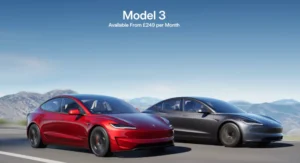As you may have seen OPEC is hurting and the recently issued annual World Oil Outlook report is just crazy for more oil.
The reports sums up 2015 as Challenging:
Since the publication of the 2014 edition of the WOO in November last year, the most obvious market development has been the oil price collapse. While the average price of the OPEC Reference Basket (ORB) during the first half of 2014 was over $100/barrel, it dropped to less than $60/b in December 2014 and has averaged close to $53/b in the first nine months of 2015. This new oil price environment has had an impact on both demand and supply prospects in the short- and medium-term, and some lasting effects can be expected in the long-term. Furthermore, huge reductions in exploration and production (E&P) capital expenditures and job lay-offs have been reported in the industry. The low oil price has also had negative consequences for oil exporting countries.
At the same time, economic factors have continued to weigh on the oil market. The economic picture in the non-OECD region is gloomier than last year. The Chinese economy seems to be maturing and growth is decelerating faster than previously expected. Economic pessimism in Eurasia has also been exacerbated due to geopolitical developments. Furthermore, from a policy point of view, additional climate change mitigation actions, as well as increasing support to renewable energy, the removal of subsidies, new upstream fiscal regimes and further energy efficiency targets have emerged as important factors.
All in all, 2015 has been a challenging year for the industry.
This is a lengthy document with plenty of data, charts and graphs over 366 pages to keep you busy over the holidays.
How does this relate to electric cars? Among OPEC’s big predictions:
1. By the year 2040, 94 percent of vehicles that roam the world’s roads will still run on oil-based fuels.
2. By 2040, battery-powered electric vehicles will constitute just one percent of global vehicle sales.
3. Hybrid electrics — a category of vehicles that use fossil fuels and could include everything from the Toyota Prius to the Chevrolet Volt — will be slightly more successful, making up 14 percent of global vehicle sales.
4. Other types of vehicles that run on hydrogen cells, CNG, and other alternative fuels will gain little to no ground over the next 25 years.
5. Despite advances in fuel efficiency, cars and trucks in 2040 will require about 17 percent more fuel than they do today, simply because their numbers are increasing.
6. Oil prices will tick up about $5 per barrel each year, thanks to growing demand and lower-than-expected oil production in non-OPEC areas.
Are these predictions on target or wishful thinking?
Vision or madness
Given the wild fluctuations in oil prices over the last 12 months, we should remember that forecasting is at best a tricky business and especially about the future. OPEC has a big interest in driving enthusiasm for fossil fuels, and reports like this are an important tool for doing just that. They keep member states, oil producers, and investors bullish, encouraging continued investment in surveying, extraction, and refining.
All of which means that anything OPEC says about oil ought to be viewed pretty critically.
On the other hand, some of the claims in the World Oil Outlook jibe with other reports we’ve seen. For example, we’ve been told that by 2030, one billion additional cars and trucks will travel Planet Earth’s already-crowded roads and the vast majority will burn petrol or diesel.
Also, we know that today’s low fuel prices have had a cooling effect on sales of hybrids and electrics. Instead, consumers are opting for less-efficient larger vehicles, which has caused nationwide fuel economy figures to fall in the U.S.
But let’s not forget that OPEC makes a number of assumptions in its report — namely, that there will be few advances in the field of battery technology, that few countries will incentive hybrid and electric sales, and that oil production outside OPEC will remain low. These seem rather dubious claims, just look at Norway. Plus given that many companies are working hard to develop new, efficient, affordable batteries; that states like California and countries like the U.S. and China are providing subsidies and other attractive benefits to owners of zero-emission vehicles; and that Congress recently lifted a ban on U.S. oil exports that was instituted four decades ago in direct response to OPEC. All these makes us question the validity of the OPEC report.
Take away
25 years is a mighty long time to forecast pretty much anything especially when there are so many variables at play. OPEC may have history and demographics on its side, but hybrid and electric car have entrepreneurs and governments pushing the electric car movement onwards and upwards.




